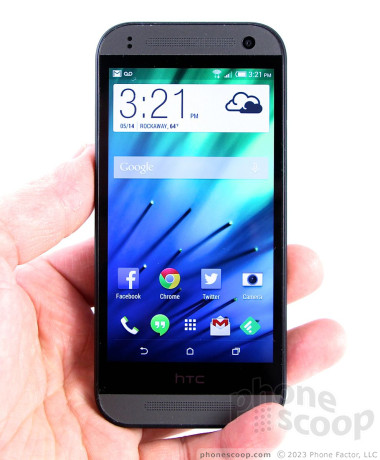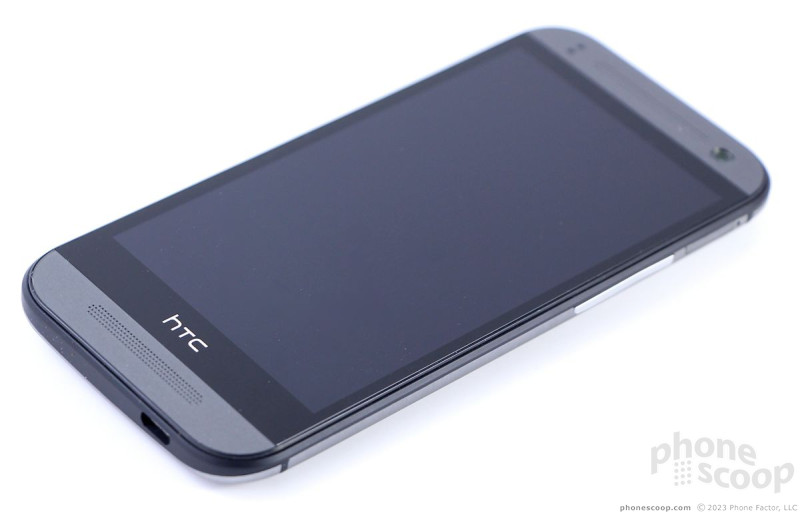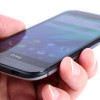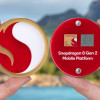Review: HTC One mini 2
May 26, 2014, 2:00 AM by Eric M. Zeman

HTC's One mini 2 may skip some of the One's most compelling features, but its performance-for-the-dollar is hard to pass up. Here's why this is the little Android smartphone that can and will.
Is It Your Type?
The HTC One mini 2 is for people who want a great-looking and compact smartphone. It's also also for people don't want to spend a huge chunk of change to get a flagship device, but want to feel like they have a flagship device. The HTC One mini 2 offers the good looks of the flagship HTC One (M8), but it tones down the size and the specs to make it more usable and more affordable. In other words, if you're phablet-averse and want a quality handset, look no further than the One mini 2.
Body
The HTC One mini 2 is almost as attractive and almost as finely-crafted as the larger, pricier One (M8). HTC wants the One mini 2 to appeal to the same design-conscious customers it is chasing with the M8, though it knows not everyone who loves good design can afford to pay for it. That's why the One mini 2 features the One's good looks, but not necessarily its flagship capabilities.
The One mini 2 is a compact and fetching handset. As with the M8, it's made from aluminum, though not milled from a single block. HTC claims 90% of the M8's chassis (not including the screen) is aluminum. With the One mini 2, that number drops to about 50% — though you can hardly tell. Where the M8 features a curved metal back plate that wraps around the side edges all the way to the front, the mini 2 replaces a bit of that metal along the sides with polycarbonate. HTC said this not only saves money on materials, but also on manufacturing costs. The same black polycarbonate bands appear across the back (white on the silver model), but they aren't as clean or flush as they are on the M8. That minor point aside, the One mini 2 feels just about as polished and well-designed as the M8. HTC took obvious care in bringing over as much of the M8's high-end appeal as possible. I think it mostly succeeded. The materials, manufacturing, and appearance of the mini 2 are excellent.
I like the size of the mini 2 more than I thought I would. While I enjoy the gorgeous 5-inch screen of the M8, the mini 2's small screen and smaller overall footprint make it infinitely more usable on a day-to-day basis. For example, my thumb can't reach the entire screen of the M8 unless I reposition my hand, but it can with the mini 2. I can easily wrap my hand all the way around it and hold on tight. The nicely rounded back surface allows the mini 2 to rest deep in the palm. Thanks to the rounded edges and slippery surfaces, the mini 2 will glide into any pocket.
The mini 2's front face has HTC's now-familiar BoomSound dual-speaker setup. There are machine-drilled holes in the panels above and below the screen to house the speakers. In the top set of holes, one tiny opening is reserved for the notification light. There are also some sensors and the user-facing camera above the screen. HTC now uses the on-screen control buttons that are part of the Android operating system. This is a welcome update compared to the unusual and awkward two-button configuration it used in last year's device. The screen, which measures 4.5 inches, has plenty of bezel above and below, but minimal bezel along the sides. This gives the mini 2 a bit of an oblong look, just like the M8.
The SIM card tray is located along the left edge of the mini 2, just like last year's model. It requires a tool or paperclip to eject it. Like the M8, the mini 2 uses a nano SIM card, which is the same size SIM card used in the iPhone 5, Moto X, and a handful of other phones. More devices will adopt this SIM card size over time. The micro-USB port is positioned on the bottom edge of the mini 2, but HTC moved the stereo headphone jack to the top (due to internal space constraints). The volume toggle is on the right edge; it's a thin strip that has a reasonably good profile. Travel and feedback are decent. The mini 2 supports memory cards up to 128 GB. The memory card tray is positioned on the right edge and also requires a tool or paperclip to eject. The screen lock button is on top, closer to the left side than the right. It is placed in a strip of black plastic. The lock button itself has a better profile than the M8's, though it is further to the left than I'd like it to be. Travel and feedback are good.
The mini 2's battery is sealed inside. The back panel houses one camera - not two like the M8 - and downgrades to a single LED flash. It retains an NFC antenna.
HTC told Phone Scoop that it is aiming for a $99 price point (on contract) for the One mini 2. If U.S. carriers price the mini 2 at $99, every other $99 phone should be quaking in its boots. None of them offer the high-end hardware experience of the One mini 2. Not even close.
Comments
No messages



















 Hands-On: HTC One mini 2
Hands-On: HTC One mini 2
 HTC One mini 2 Offers A Bit Less of A Good Thing
HTC One mini 2 Offers A Bit Less of A Good Thing
 iPhone 14 Plus Offers a Big Screen For Less
iPhone 14 Plus Offers a Big Screen For Less
 Snapdragon 8 Gen 2 Redefines AI in Flagship Phones
Snapdragon 8 Gen 2 Redefines AI in Flagship Phones
 iPhone 13 Upgrades Cameras, Displays
iPhone 13 Upgrades Cameras, Displays
 HTC One mini 2 (GSM)
HTC One mini 2 (GSM)



